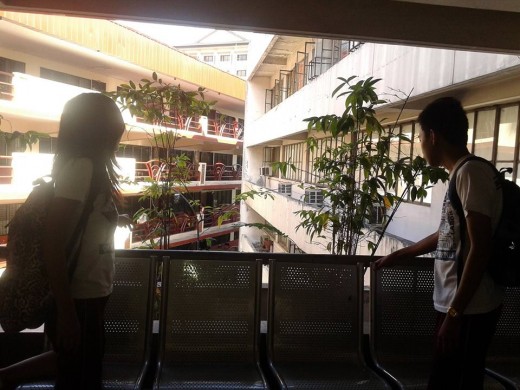Classroom Practices on Values Formation and Environmental Education



Environmental Education
All inhabitants of the Planet Earth are already experiencing environmental stress brought about by toxic wastes entering the different layers of the earth’s biosphere: atmosphere, lithosphere and the hydrosphere. The earth is already giving us indications of its alarming state. We are now experiencing the effects of climate change, global warming, ozone depletion, pollution, species extinction, desertification and improper waste management.
Philippines is not an exemption in letting us feel the harsh realities of these environmental threats and challenges. With all the ever increasing demands created by the environmental problems accompanied by social, political and technological changes happening, the education sector is faced with challenges and is expected to initiate changes in the curriculum and give more attention to environmental education. The curriculum should be geared towards the provision of knowledge, skills and values that will help the learners cope and adapt to these changes.
The goal of environmental education is to develop an environmentally literate and responsible citizenry who will ensure the protection and the improvement of the environment, and bring about sustainability, social equity and economic efficiency in the use of the country’s natural resources.
Because of the existing environmental problems we are into and the thrust for sustainability, the protection and improvement of the environment have become imperative educational goals. It is also envisioned that within the next decade, a great majority of Filipinos will be imbued with a sense of responsibility to care for, protect for, and enhance environmental quality that is conducive to their well being and supportive of the nation’s economic development.
What classroom practices could a teacher adopt to be able to attain the goal of environmental education?
Here is an example of the module/workshop teachers could adopt:




MODULE-WORKSHOP: A HANDS-ON ACTIVITY ON WAR FOOTING AND REDUCTION OF CARBON FOOTPRINTS
TITLE: ENERGY CONSERVATION (Vegetation Survey) Vegetation Investigation and Survey
INTRODUCTION:
The most recent report from the Intergovernmental Panel on Climate Change (IPCC) estimates that improvements in the energy efficiency of buildings could potentially reduce projected global carbon emissions up to 29% by 2020, and up to 40% by 2030. Undoubtedly, the IPCC’s estimates are deliberately conservative, based on a pessimistic view of how rapidly the building industry can reform its practices. If the reforms could somehow be accelerated, the reductions in fossil-fuel energy needs could be that much more dramatic.
According to some of the most prominent architecs such a speed-up is certainly possible. ‘Green-building researchers’ have already developed and tested many of the necessary tools and strategies, to the point where they can now build homes, offices and other buildings that use 80–90% less energy than existing buildings. The most efficient of these structures are almost completely ‘passive’, meaning they require very little, if any, traditional heating or air-conditioning. Yet the overall comfort they provide is, if anything, superior to existing buildings. Nor is there necessarily a cost penalty: these ultra-energy-efficient buildings are often no more expensive to build than conventional structures, and work out far cheaper if energy bills during their occupation are taken into account.
However, in practice, encouraging the construction industry to change its ways is a daunting prospect. Especially in the developed world, more than a century of cheap energy has divorced the architecture of buildings from energy considerations, and from their environment. Most builders and architects today haven’t got a clue how to design buildings with ultra-low carbon emissions. Not green buildings in general, including water, air quality, local ‘green’ materials etc, but strictly energy, as this article is about sustainable architecture and climate change. An analysis of the life cycle energy consumption of a building reveals that the big three energy consumers – heating, cooling, and lighting – are all affected mainly by architectural design. Indeed, energy efficient appliances and light bulbs are important, but if you want to take out the biggest energy savings, this would mean building in energy efficiency in architectural designs.
Considering the existing scenarios in your respective work stations, regardless of its architectural designs, we can see that trees and plantings are often leveled in an area prior to school building or residential development with little regard for their economic and aesthetic values. The trees, shrubs, ground covers, vines and flowers temper the impact of sun and wind on the home and school. Vegetation can shield a home or school from unwanted sun and wind, but still admit desirable sun and breezes. Because of the angle of the sun and the effects of seasonal changes, most homes and schools need protection from the sun during the summer on the south, west and east sides and protection from the wind during winter on the north side (Northern Hemisphere). Of course, there are regional variations.
OBJECTIVES:
- To develop the ability of students to identify and clarify their value positions related to discrete environmental issues: global warming and climate change and its mitigation
- To develop the ability of students to evaluate, clarify and change their value positions in the light of new information
NOTE:
This activity can be used as an introduction on the impact of vegetation on energy consumption and human comfort. Students should inspect the values represented by or associated with their survey findings and compare these against energy conservation and ecologically - desirable values. If problems are identified, alternative solutions should also be identified and evaluated. This activity will teach the student the need for well designed structures and buildings for environment efficiency or carbon reduction.
PROCEDURE:
a. Investigate the North, South, East and West side of your home and school and determine if the vegetation is beneficial and where additional vegetation is needed. Make your comments in the space provided for in the next pages.
A. North Side of the College/ University
Trees:
Shrubs:
Does the vegetation make a good windshield? Yes__ No__Why?
B. South Side of the College/ University
Trees:
Shrubs:
Does the vegetation make a good sunshade? Yes__ No__ Why?
C. East Side of the College/ University
Trees:
Shrubs:
Does the vegetation make a good sunshade?Yes__ No__ Why?
D. West Side of the College/ University
Trees:
Shrubs:
Does the vegetation offer any form of environmental protection? Yes__ No__Why?
Questions and Suggestions:
- Does it appear as though either your home or the school needs additional vegetation plantings in order to maximize human comfort and energy conservation? If so, what suggestions could you make in order to accomplish this?
- If your class agrees vegetation plantings are needed, make recommendations to the school administration for additional plantings.
- Invite a landscape architect or nurseryman to your class to discuss different types of vegetation and their effects on heating and cooling needs.








